Thousands besiege Indian village identified as best spot on Earth to watch longest solar eclipse of the century
By Daily Mail Reporter, 23rd July 2009
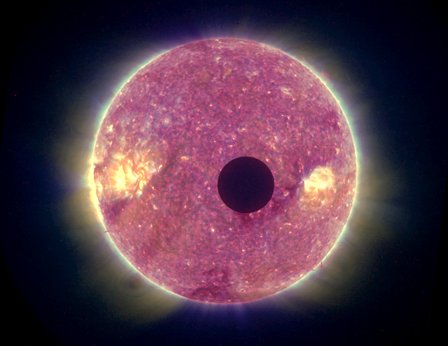 Solar eclipse viewed from a spacecraft - Photos / 2
Solar eclipse viewed from a spacecraft - Photos / 2Taregna, India-- It was billed as the best place to see the eclipse and as this astonishing picture shows the tiny Indian village of Taregna in eastern India sure drew in the crowds.
Shoulder to shoulder the masses ranks of eclipse hunters gathered to witness the longest solar eclipse of the 21st century. At 6.24 am (0054 GMT) live TV pictures were beamed from the location, 300 miles north-west of Calcutta, where assorted scientists, including Nasa, had said it would be the best place to watch the eclipse. The eclipse - caused when the moon moves directly between the sun and the earth, covering it completely to cast a shadow on earth - lasted almost 4 minutes in India. In some parts of Asia it lasted as long as 6 minutes and 39 seconds.
In Taregna, thousands had gathered a day in advance but thick clouds and overnight rains provided no spectacle, just a cloudy darkness. 'It was still a unique experience with morning turning into night for more than three minutes," said Amitabh Pande, a scientist with India's Science Popularization Association of Communicators and Educators, who was there. Still, the rain was welcomed by many in this agricultural area which has seen scant rainfall this monsoon season. 'It would have been nice to see the solar eclipse but the rain is far more important for us,' said Ram Naresh Yadav, a farmer.
Casting two billion people into total or partial darkness in China and India, the world's two most populous countries, this will have been the most witnessed eclipse in history, Nasa scientists said. Thick cloud cover over India obscured the sun when the eclipse began at dawn. However, the clouds parted in many areas a few minutes before the total eclipse took place. In neighbouring Bangladesh, eclipse watchers came out in droves. 'It's a rare moment - I never thought I would see this in my life,' said Abdullah Sayeed, a college student who travelled to Panchagarh town from the capital Dhaka to view it. He said cars in the town needed to use headlights as 'night darkness has fallen suddenly'. People hugged each other and some blew whistles when the eclipse began, he said.
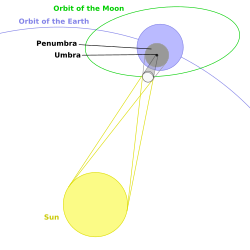 - A total solar eclipse will be seen in India on July 22
- A total solar eclipse will be seen in India on July 22It is the longest since July 11, 1991, when a total eclipse lasting six minutes, 53 seconds was visible from Hawaii to South America. There will not be a longer eclipse than today's until 2132. For astronomers, today was a chance for a prolonged view of the sun's corona, a spectacular blaze of plasma extending far into space. One Indian travel agent scheduled a charter flight to watch the eclipse by air, with seats facing the sun selling at a premium. The eclipse first appeared at dawn in India's Gulf of Khambhat, just north of Mumbai, and then moved eastward at 15 times the speed of sound across India, Nepal, Burma, Bangladesh, Bhutan and China before reaching the Pacific. It was last seen from land at Nikumaroro Island in the South Pacific nation of Kiribati. Elsewhere, a partial eclipse was visible in much of Asia.
In China the eclipse was the longest since 1814 and will not be overtaken by a longer one until 2309. 'We'll have to wait a few hundred years for another opportunity to observe a solar eclipse that lasts this long, so it's a very special opportunity,' said Shao Zhenyi, an astronomer at the Shanghai Astronomical Observatory. Western backpackers joined the hundred of millions of Chinese who watched the event. Briton Shelagh Lester Smith, who had travelled specially to Shanghai for the eclipse, said even the pouring rain did not ruin the experience as inky darkness fell. 'It felt like the end of the world had come,' she said.

- Hindu devotees observe a solar eclipse through specially-designed viewing glasses as they take holy dips in the Sangam, the confluence of the Ganges, Yamuna and the mythical Saraswati River, in Allahabad, India.
Thousands of Hindus bathed in the Ganges in the Indian town of Varanasi to cleanse their sins as the moon threw the area into darkness for three minutes, 48 seconds. Millions of the more superstitious in India stayed indoors, fearful of the phenomenon. One Hindu fable says an eclipse is caused when a dragon-demon swallows the sun. Predicted outbreaks of civil unrest do not appear to have happened.
Some families have advised pregnant relatives to confine themselves to curtained rooms, following long-held fears that the invisible rays would harm the feotus and the baby born with disfigurations, birthmarks or a congenital defect. Krati Jain, 24, a New Delhi software professional expecting her first child, said: 'My mother and aunts have called and told me stay in a darkened room with the curtains closed, lie in bed and chant prayers.' In the northern Indian state of Punjab, authorities ordered schools to begin an hour late to prevent children from venturing out and gazing at the sun. (more)
 - AFP: Solar eclipse spreads cloak of darkness over Asia
- AFP: Solar eclipse spreads cloak of darkness over Asia– Graphic showing the path of the total solar eclipse across Asia and the Pacific from July 22, 2009. (AFP/Graphic)
Varanasi, India (AFP) – The longest solar eclipse of the 21st century cast a shadow over much of Asia on Wednesday, plunging hundreds of millions into darkness across the giant land masses of India and China. Ancient superstition and modern commerce came together in a once-in-a-lifetime opportunity which could end up being the most watched eclipse in history, due to its path over Earth's most densely inhabited areas. While the well-heeled took to the skies to watch the phenomenon from specially chartered planes, others took to holy waters to purify themselves as the sun's rays were snuffed out from Mumbai to Shanghai.
The cone-shaped shadow, or umbra, created by the total eclipse first made landfall on the western Indian state of Gujarat shortly before 6:30 am (0100 GMT). It then raced across India, blacking out the holy city of Varanasi on the banks of the Ganges, squeezing between the northern and southern tips of Bangladesh and Nepal before engulfing most of Bhutan, traversing the Chinese mainland and slipping back out to sea off Shanghai. (more)


 - The Hindu:
- The Hindu: 
 -
- 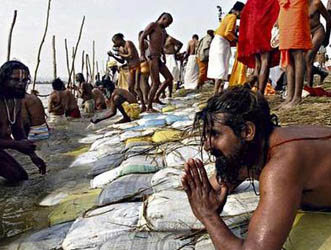 -
-  -
-  - Times:
- Times:  - Ganges aarti
- Ganges aarti

 AA:
AA:  - Decision Care Astrology:
- Decision Care Astrology: 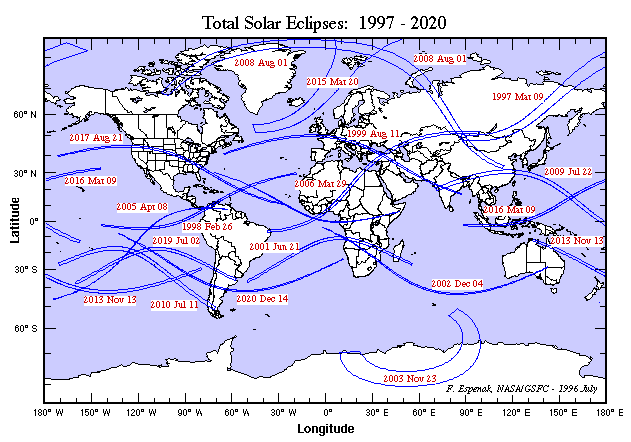
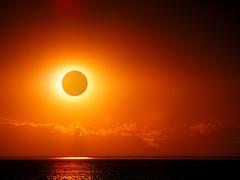 -
- 


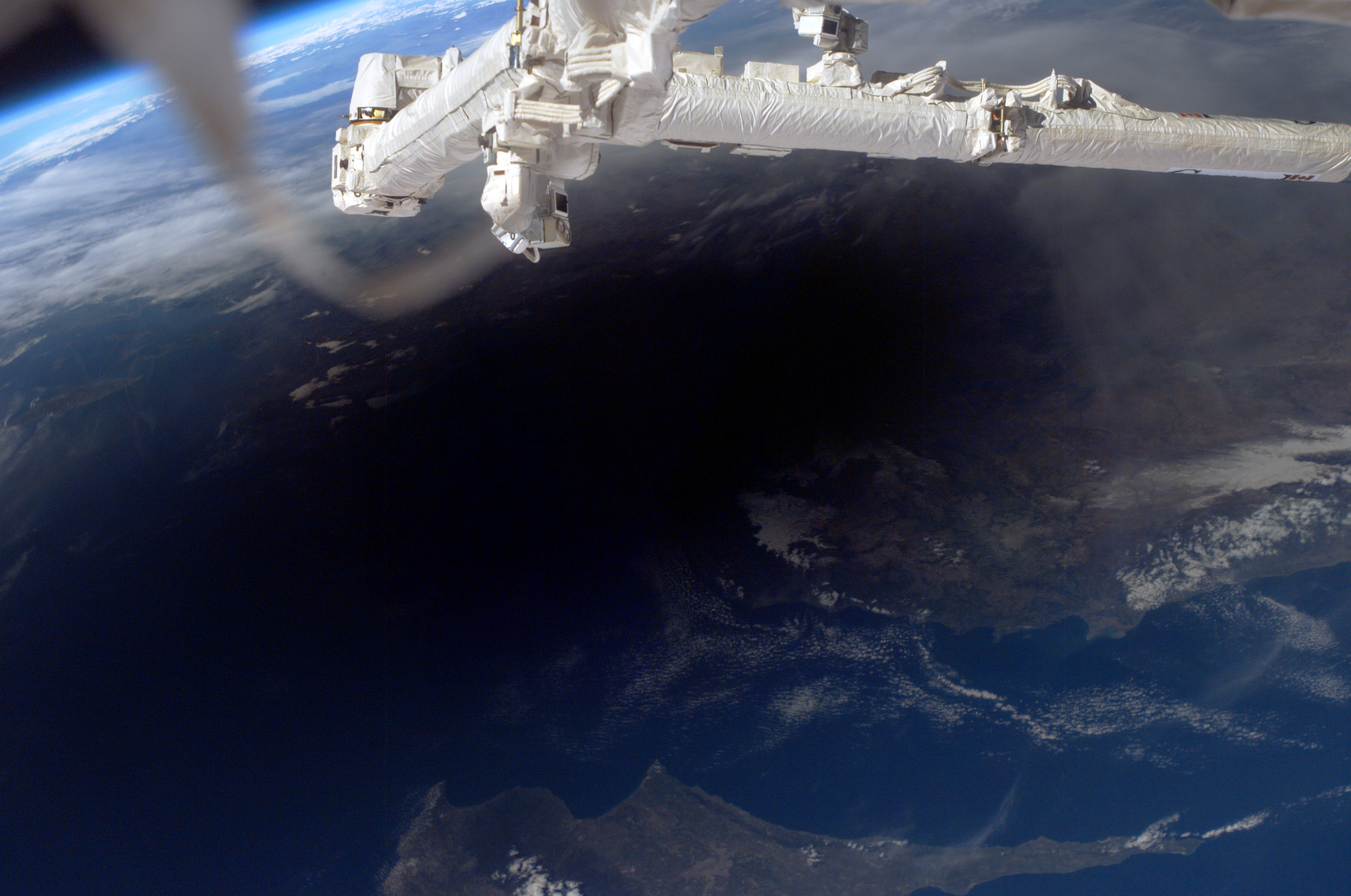
 - Wikipedia:
- Wikipedia:  - Panorama of
- Panorama of 
 - Wikipedia:
- Wikipedia: 
 -
- 
 -
- 


 -
-  -
- 